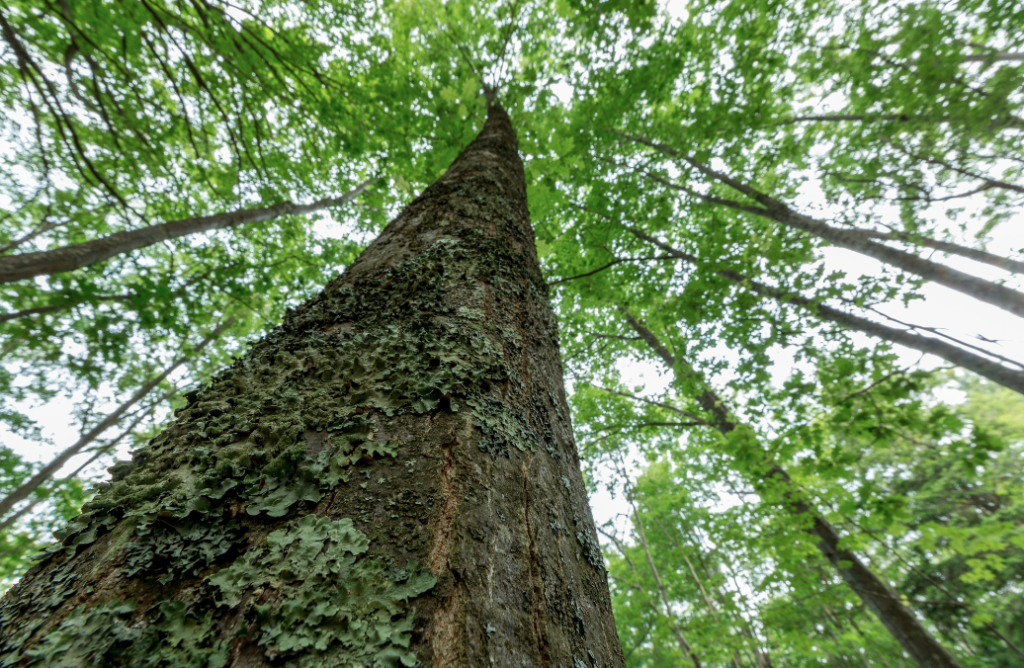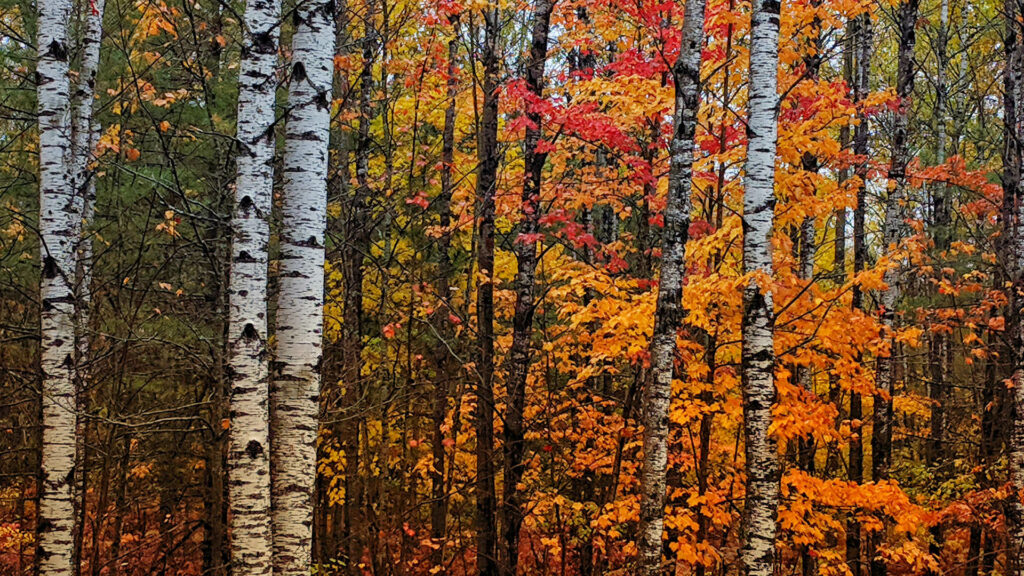The Nature Conservancy of Michigan – Working at the Intersection of Economic Development, Nature, and Sustainability

The Nature Conservancy in Michigan recently released its 2022 Michigan Conservation Results Report that outlines the work it is doing to tackle conservation issues that range from climate change to biodiversity loss. With 32,000 members, a staff of 55+, 25 trustees, and many contributors, partnerships, and donators, 32,541 acres of land became protected last year, totaling 437,000 acres to date. We spoke to Associate State Director Patrick Doran about some of the key initiatives outlined in the report. Q: A recent acquisition of land in the Keweenaw Peninsula nearly doubled the peninsula’s protected lands, which provide habitat for many iconic species. How does this impact the state and Southeast Michigan? A: It’s a great question – how the work we are doing in Northern Michigan impacts the entire state and beyond – and I want to give some context around that. TNC is the world’s largest conservation organization with almost 6,000 employees around the world. When we have a project in place, we think not only about executing that project with boots on the ground but also think about how it impacts the entire system. We lift our heads and assess the impact on the region, the Great Lakes, the state, and the world. We think about how it will affect the economy, the air, the climate, people’s quality of life, and more. Securing the 30,000-plus acres in Keweenaw is amazing for us. I also want to note that there are several partners and entities involved in these efforts. TNC could never have done this alone. The opportunity to move land into conservation at this scope just does not exist in too many places in the US. The land has been under traditional timber ownership and management. We see TNC as a temporary holder – maybe three to five years – and eventually, we’d like to see the land secured by the state and local townships and municipalities and counties. We believe local ownership achieves the best conservation outcomes. So, we will ensure it’s protected, and that the forest is under a sustainability management plan, so that the conservation status improves from what it was, all the while making sure that it remains available for public use and recreation. This project truly sits at the intersection of economic development, nature, and sustainability, and there are several ways that it connects to other parts of the system. Relating this to the Southeast Michigan area, ecologically, in the spring Keweenaw is one of the most important migration areas in the Midwest. Millions of hawks, songbirds, and more move from South America, hit the Great Lakes to the Detroit corridor up to the U.P., and the majority fly up the Keweenaw Peninsula before making the daunting trip across Lake Superior. Southeast Michigan is an important stop in their migration process. So, there is this interesting species connection between the Lower Peninsula and the U.P. The connection also ties into the economy and also climate change. Those forests are places where we can store carbon through the growth and management of trees and also keep the industry intact. It’s a careful balance. Sequestering carbon will help meet climate change goals and this impacts the whole state. We have robust timber and water industries throughout the state and in Southeast Michigan, and that’s very important to our economy. Another connection this project represents is with businesses across the state. TNC is exploring the most effective ways to work with companies across the state in their quest to meet their sustainability goals. The forests can support these companies in this quest, and the companies are in turn investing in the forests. TNC also has a partnership with the Michigan Manufacturers Association. The goal is to help educate and assist small and medium-sized businesses with sustainability planning. We offer a suite of workshops for these manufacturers and companies. Two good examples are Steelcase and Consumers Energy – we began working with both companies last year. Q: According to the report, all 47,000 acres of TNC’s forest reserves in Michigan are now FSC®-C008922 certified. What does this mean? A: What FSC certification does is up the level of sustainability management and make sure all are adhering to best practices in terms of how many trees are cut, frequency of cutting, how streams and lakes are impacted, etc. This makes the whole system healthier. Again, timber is a huge part of the state’s economy, and it’s important to manage this industry in a way that is thoughtful and promotes the ability to sequester carbon. The focus is to achieve our ecological goals and at the same time keep land in the timber industry. We are also involved in working with the manufacturing industry in Southeast Michigan and across the state to ensure they are actively using more sustainably produced timber. When the supply chain demands this, it becomes a more virtuous cycle. Relating this to the construction industry, there is also a movement in place to use cross-laminated timber or mass timber, which offers more long-term carbon storage in comparison to using cement or other building materials. The DNR and Michigan State University are working on reinvesting this back into the building and construction process. Q; Regarding our parks and waterways, the report references Public Act 53 of 2022, saying that ultimately $2.3 billion of the historic state funding included in the act was designated for the improvement of Michigan’s water infrastructure, with an additional $450 million for state and local parks. What is TNC’s role in these improvements? A: TNC operates at a policy and system level to impact our parks and water across the state. Michigan sits in the middle of one of the world’s largest freshwater systems, so we have to protect that. We work to promote healthy infrastructure and programs that support investing in that. Regarding the importance of maintaining our parks and nature within urban areas, I was at a conference last year in Detroit and began asking businesses why they think investing
Mitigating Climate Risks to Michigan’s Forestry Industry

More than half of Michigan is forested, with 20 million acres making up a vital part of the state’s landscape. Millions of acres of Michigan forest land are used to produce timber, a renewable and sustainably managed resource that supports many industries. The forests also provide other values, including wildlife habitat and watershed protection, and also help to sustain biodiversity. According to the Michigan Department of Natural Resources, the state’s forest products industries provide direct employment to almost 42,000 people, leading to $13.4 billion in economic output. Since 2014, jobs directly provided by forest products industries have increased by 9.7%. SBN Detroit spoke with DNR state forest planning and operations manager David Price about the impacts of climate change on Michigan forests, the trickle-down effect, and what can and is being done to mitigate risk. Q: How is climate change impacting forestry in Michigan? A: Forests have always been associated with Michigan. They’re a huge part of our social and economic fabric. Our forests support direct forestry jobs and also many other secondary industries. Trees are also important to our general well-being, mental health, and recreational pursuits. They help to regulate the global climate, absorbing a substantial portion of the fossil-fuel carbon emissions we humans produce. Climate change is driving concerns about forest health and productivity in many ways. Michigan is growing warmer and wetter, and there are projections that by the end of the century, the climate will be more like present Arkansas. Cold winters control and kill off certain insects that can be harmful to trees. Warmer winters mean these insects can be more persistent and harmful. Combine that with the fact that warmer weather can stress certain tree species and make them more susceptible to drought and less resistant to insects and disease, and we have a big problem. In Michigan, a good example of this is the hemlock woolly adelgid. We’ve been battling to contain this insect because it’s threatening to kill our hemlock trees along the coast of Lake Michigan. Cold winter weather helps to control the scale of this insect that spreads fungal disease, and warmer winters directly correlate to less winter mortality. There are operational considerations that climate change is causing as well. If the ground does not freeze, it’s significantly harder to harvest timber without causing extensive damage to the soils, potentially contributing to sediment moving into streams and wetlands. In Michigan, we have indigenous species such as red and jack pine, aspen, and boreal – spruces and firs – that are at the southern-most extent of their natural range in Michigan and they are not able to move quickly and adjust as the climate changes. A potential decline in the health and productivity of these tree species due to climate change will harm the values that they provide, including timber production, wildlife habitat, and carbon storage. An excellent example of this is the potential decline of jack pine forests in the northern Lower Peninsula which would cause a loss of habitat for the Kirtland’s warbler, a bird that is endemic to Michigan, recently removed from the endangered species list and proposed to be the new state bird of Michigan. So, as you can see, climate change is affecting our forest health and productivity in several ways. Q: What are the implications regarding business and the economy in Southeast Michigan? A: Michigan has a robust $22 billion forest-products industry. Most of the timber is harvested in northern Michigan, but secondary manufacturing occurs throughout the state, including Southeast Michigan. Many are surprised that Wayne County itself generates over a billion dollars in the forest products industry. The county’s paper products industry supports over 2,800 jobs alone. Think about sawmills in northern Michigan that then distribute products that are then sold at Menards, Home Depot, etc. This directly contributes to home construction in Southeast Michigan, which is also a huge industry. The bottom line is, maintaining a healthy and productive forest throughout the state is directly related to the economy in Southeast Michigan and the economy of the entire state. Q: What can be done to mitigate the risk to our forests, and what is the DNR doing about this? A: This is a million-dollar question. The happy news is that we can do things to change the outcome and the DNR has many initiatives in place. One simple thing we can do is plant trees. There is a lot of vacant land in northern Michigan that used to be forested. These areas are prime for reforestation. Planting trees is a great way to utilize nature for removing carbon from the atmosphere, and it’s underutilized in the state. The DNR plants over six million trees per year, most replacing forest that’s been harvested. The DNR has also initiated The Big Wild Forest Carbon Project, the first project in the nation to leverage the carbon storage capacity of trees on state forest lands. This pilot project captures carbon that is sequestered in trees and generated carbon credits. DTE Energy purchased the first decade of carbon offset credits to be used in their commercial natural gas programs. On a smaller scale, we are working offsetting power usage at our fish hatcheries through solar energy. We are also working with a company called Circle Power to develop two utility-scale solar energy projects on brownfield sites in the Upper and northern Lower Peninsulas. The DNR also partners with Michigan State University for some important research projects. First, we are evaluating assisted tree migration, which is a climate change adaptation strategy that involves moving trees or their genetic material from a known location to an area where they are presently well-adapted to an area where they are not currently present or prevalent, but where the trees may be better adapted to future climate under climate change projections. We are experimenting with new species and genetics of species and also identifying seed sources that may be better climate adapted to Michigan in the future to help the forest to


































